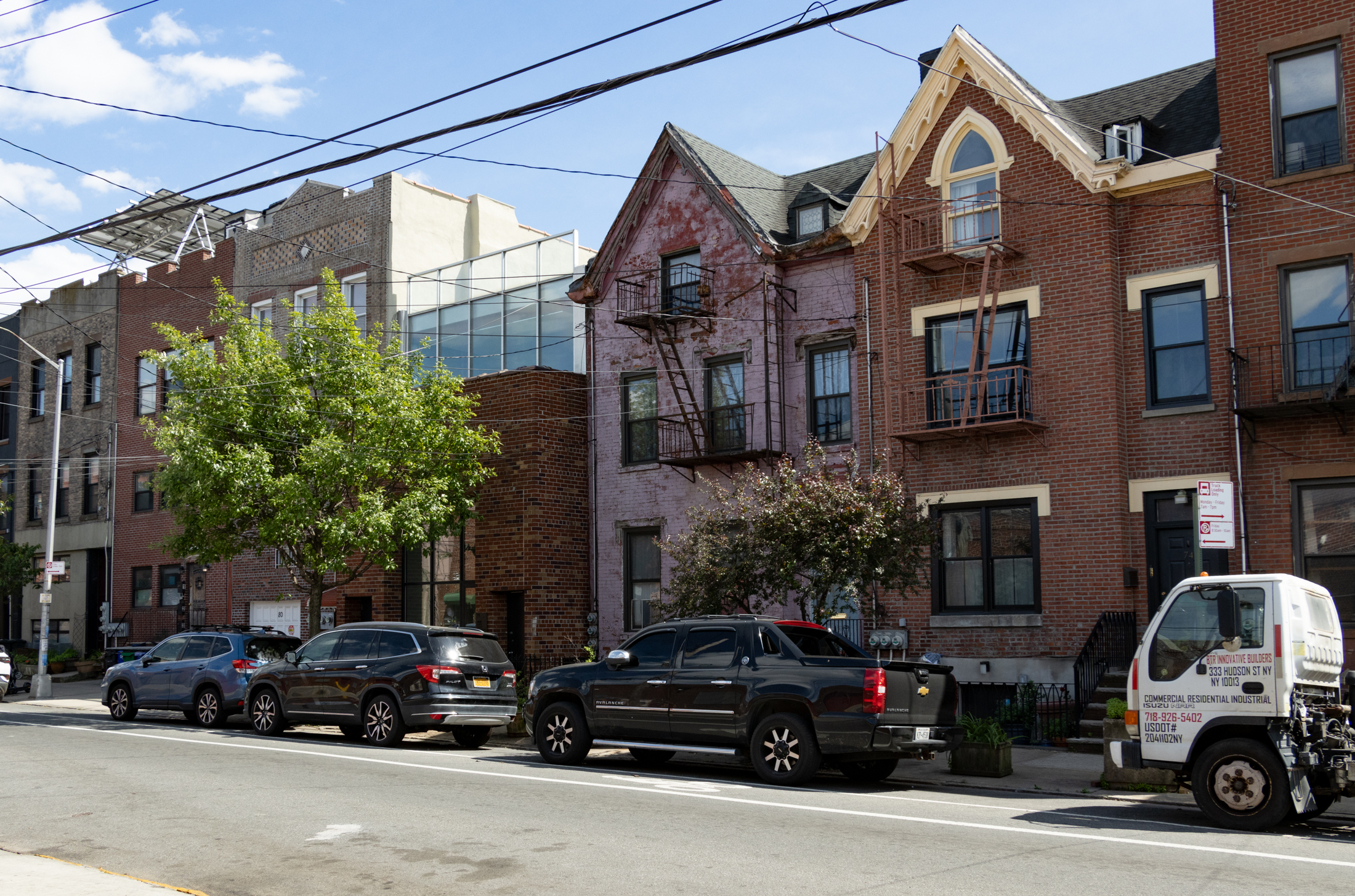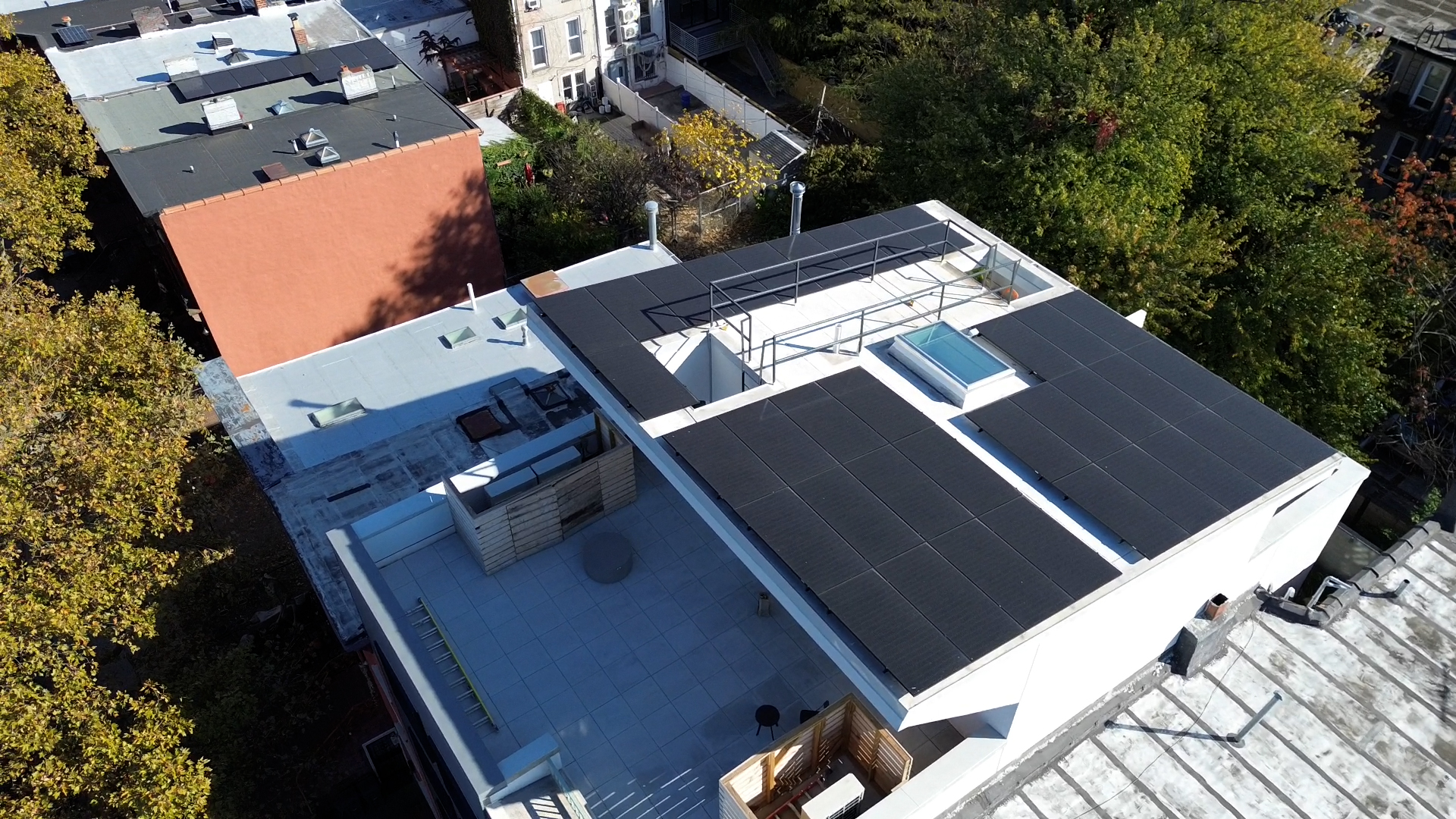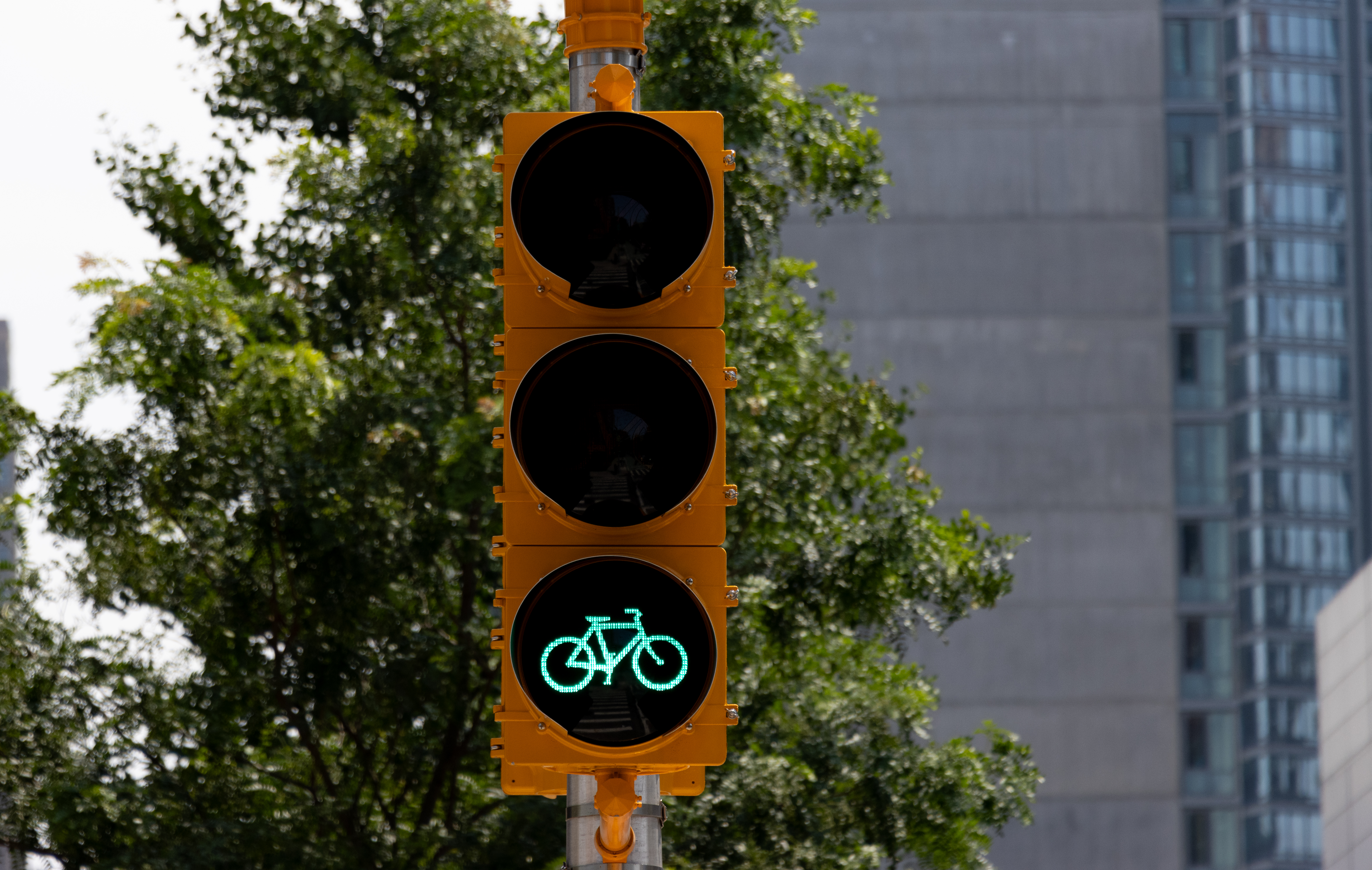Queenswalk: Affordable Housing and Sunnyside, Part 2
Sunnyside Gardens in Queens would end up being one of the most significant low rise, low density planned residential communities in New York City and a model for similar communities all over the country. The need was obvious: affordable housing for the working class. How to do it, and do it in such a way…

Sunnyside Gardens in Queens would end up being one of the most significant low rise, low density planned residential communities in New York City and a model for similar communities all over the country. The need was obvious: affordable housing for the working class. How to do it, and do it in such a way that it was affordable, but also very livable, would take work. Fortunately, there was a group of very smart, very idealistic, yet very practical people who were eager to take this on. Led by architects Clarence Stein and Henry Wright, with the able help of developer Alexander Bing and the City Development Corporation, this group, the Regional Planning Association of America (RPAA) developed the ideas that would become such a successful community that has endured, and thrived, and was rewarded with landmarking in 2007.
One of the reasons Sunnyside was successful is that it was so completely thought out. Many housing reformers come up with great ideas for the architecture of the buildings, but fall short in planning the less noticeable, or less glamorous details, such as community and family structures and needs, financing for both developers and homeowners, high quality buildings on a budget, sustainability, and urban growth. The RPAA, which had members in all of the fields and disciplines needed, thought of it all. They met for eight years planning Sunnyside Gardens, eight years to think of everything, and make sure Sunnyside would work, adapting their plans as the project was built in stages. For more background on housing and the beginnings of the RPAA, please read Part One of our story, which appeared last week.
Sunnyside Gardens is in northeastern Queens, and consists of over 600 buildings; one, two, and three family houses, as well as small six and seven family apartment buildings. They were all arranged in groups around central courtyards, mixing the different kinds of houses with the apartment buildings. The first group of houses and apartments was begun in 1924, and was called Colonial Court. It was between 43rd (Foster) and Skillman Avenues, and 47th (Carolin) and 48th (Gosman) Avenues. The buildings were begun in the spring and finished the same fall. They sold out immediately, and work was begun on the second group, called Hamilton Court.
This group was begun in 1925, and would house 225 families in single family and three family buildings. It was completed the same year, and would also be successful in sales. The third group would begin, then the fourth and so on. By 1928, they were done, and Sunnyside Gardens now was home to over 1,200 families. They hadn’t even used all of the land that they had purchased. The RPAA looked at each group as it was built, and tweaked the model, so that the later groupings became more efficient and more cost effective, keeping with their business model of being “affordable and livable.”
The houses were designed to have as little wasted space as possible, and to be built in the most cost effective ways possible. They were only two rooms deep, to maximize natural lighting and ventilation. All of the internal layouts were arranged to make plumbing and electricity easy to install. They were all 28’4” wide to utilize stock building materials. The concept of the garden apartment was paramount, and all of Sunnyside Gardens’ houses and apartments were built around landscaped courts and yards. For that reason, garage facilities were built off-site, perhaps the biggest inconvenience to later residents. As progressive as Stein and the rest of the RPAA were, they still thought of automobiles as an intrusion, and sought to provide a safe haven for women and children by not having them around. They built a series of garages and parking facilities a few blocks away, some of which no longer exist.
The idea of Sunnyside Gardens had roots firmly embedded in social science as well as architecture and landscape planning. The two and three family houses were designed to be owner occupied, with one or two rental units above. The apartment buildings were co-ops. The idea was to mix home owners, renters and co-op owners together, all with a stake in the larger community, both physically, by close approximation, and socially, with the courtyards and shared open spaces, and the sense of belonging to a greater whole than just one’s solitary property. The buildings were pretty much the same in terms of size and amenities, so there was no need for a renter to feel that they were in an inferior apartment, or position, to the landlord, or the co-op owner. Since everyone was in the same general economic demographic, the greater good of Sunnyside would join them all together. It was a very utopian ideal.
Sunnyside Gardens proportionately, had a lot of open space. It was part of the plan, and was based on this social planning ideal that encouraged community. Large open green space was planned within the courts and groupings that were supposed to be play areas for children, or areas of quiet contemplation and relaxation. All of the landscaping and open space was planned by Marjorie Sewell Cautley, a 1917 graduate of Cornell’s landscape architecture program, and one of the first women in America to have a professional practice in this field.
Cautley believed that good landscapes could improve lives. She planned each garden space at Sunnyside to be unique, with a mixture of native and non-native species arranged in different ways in different courts. She planned open spaces for children’s play, with built-in areas for mothers to watch their children. Other areas were also landscaped so that visibility and supervision were possible, while other garden spaces were more private, and given over to less rambunctious activity. The center courtyards had open lawns with trees, shrubbery and flowers, and the streets were planted with London plane trees and sycamores to create a canopy of green over the sidewalks and streets.
The houses themselves all looked similar. They were all faced in Hudson River brick, a cheap, yet durable building material, with natural variations in color and texture, all of which were enhanced by the landscaping around them. It would have been quite easy and very economical for every building in every group to look exactly the same, but Clarence Stein and the other architects involved in the project did not want that. They wanted economical variety within the Gardens. They wanted the residents to be able to take pride in the ownership of a unique part of the whole.
The brick pattern and direction of the brick was varied within each group, to add some individuality to the houses, with changes in the pitch and shape of the roofs, and the designs of the small wooden porches and entryways. Some have fanlights, or porticos, others don’t. All of the designs were vaguely in the Colonial Revival style, at the time, and still, a familiar and comfortable style of American architecture. The planners felt that there were enough radical ideas involved in Sunnyside Gardens already, the architecture should be familiar, comforting and non-controversial. The minimalistic look of the Gardens was already incorporating the ideas of the European based International Style.
Sunnyside Gardens was envisioned by their planners as homes for lower income working families. But even the economical and lower cost factors worked into the buildings, it was not possible for this demographic to buy, and Sunnyside became home to a slightly more well off group of homeowners. They were in the lower-middle income range, with salaries below the 1926 median of $3,000 per year. Sunnyside’s owners were office workers, salesmen, municipal employees, chauffeurs and mechanics. There were also teachers, an architect, several writers, artists and even a doctor or two.
Many ethnicities were represented, especially the Irish, and Germans, both Jewish and Christian. Half of the population came to Sunnyside from the Lower East Side. The turnover was pretty high during the Great Depression, but the complex still thrived. Although there were no restrictions keeping them out, there were no African Americans at Sunnyside in the early years. By the 1940s, Sunnyside was a haven for a lot of artists and creative types and their families. Some of them were quite well-known, including Rudy Vallee, Judy Holliday, Perry Como, trumpeter Bix Beiderbecke, poet Florence Baker, journalist S.H. Raskin, and painter Raphael Soyer. By the 1960s, Sunnyside was solidly middle class, and still mostly Jewish, Irish and German.
When the Gardens were developed, all of the homeowners and co-opers signed the restrictive covenant that ensured that certain changes would not be made to the Gardens. There were rules and restrictions, including no building of sheds or garages on the properties, no fences, and things of that nature. Easements were provided in the deeds, allowing for the management company to collect for the upkeep of the gardens and sidewalks, as well as the other common spaces. There were several community buildings used for meetings, and gathering spaces, as well as a pre-school and playgrounds. Everything was going quite well, with people who could have never afforded their own homes becoming home owners, and the community joined as one in cooperation for the whole, just as the planner envisioned. Then the Depression struck.
Many of the homeowners and renters could not make payments, as their jobs were gone, and they wanted a moratorium on rents and mortgages. The banks thought otherwise, and after a yearlong rent/mortgage strike, had the participants evicted. A new management company took over the running of the Gardens, but the utopian ideal had been shattered by the reality of the outside world. It would be further shattered during the 1960s, when the easements and restrictions originally written into the Gardens ended. New homeowners began building garages and fencing off private gardens out of the once-public spaces. Decks were built, and curb cuts began appearing in houses that were next to the street. Only one court, Hamilton Court, voted to keep the easements, and ban the new fencing and other changes going on throughout the development.
In 1974, acknowledging the unique needs and planning of the Gardens, the New York City Planning Department declared Sunnyside to be a “Special Planned Community Preservation District, ” subject to different rules than most of the city. In 1981, the Sunnyside Gardens Conservancy, also known as the Sunnyside Foundation for Community Planning and Preservation (or the Foundation), was created as a community land conservancy with the goal of restoring the original character and preserving the open space and design of Sunnyside Gardens. Each of the Gardens organized, and working with the whole, as well as outside agencies, was able to restore some of the common spaces and gardens. Tax credits were offered to homeowners who went back to the agreements of the original easements.
Slowly, much of Sunnyside Gardens began to once again look like it had originally. The Gardens were placed on the National Register of Historic Places in 1984. The idea of landmarking also took hold, and a dedicated group of people worked long and hard, until that goal was achieved in 2007. Today, Sunnyside Gardens once again represents the goals of its idealistic and dedicated planners, and its residents mean to keep it that way. For more information on this preservation movement, please go to the Sunnyside Gardens Preservation Alliance website. GMAP
The 2007 designation report for the Sunnyside Gardens Historic District was the source of the information for this article. If city planning and development is your interest, you should check it out. Here’s the link: http://www.nyc.gov/html/lpc/downloads/pdf/reports/SunnysideGardens.pdf.
(Above map and rendering: affordablehousing.org)









I actually really appreciated this piece on Sunnyside Gardens.
Also, I don’t think diversity was the goal of this plan anyway. It’s clearly stated that the goal was to provide affordable housing for the working class, to create a community that people would enjoy living in and being a part of. Montrose does also say “Although there were no restrictions keeping them out, there were no African Americans at Sunnyside in the early years.” But that was in the early years.
If you go there today and diversity is your thing, then you might be happy at what you find.
that all sounds wonderful but let’s not forget that the “diversity” the gardens was meant to create did not include non-whites….